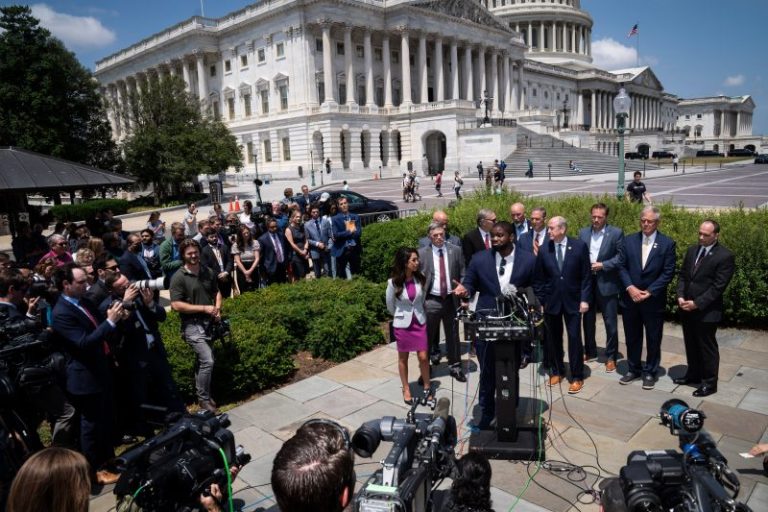Congress came together in surprisingly bipartisan fashion last week to avoid a potentially catastrophic default on the nation’s debt.
Large majorities of both Republicans and Democrats voted for the debt ceiling deal, which might suggest that, finally, an appetite exists for compromise in deeply divided Washington.
A closer look at the numbers punctures that optimistic reading and suggests greater Republican opposition when it comes to future legislation.
The specific breakdown of the debt ceiling vote shows a potentially significant generational shift in the Republican Party away from just this kind of governing compromise.
The big surprise was how bipartisan the vote in the House was: 78 percent of Democrats voted for the package, but so did 68 percent of Republicans — over the strenuous objections of the right-wing House Freedom Caucus. But within that vote are more telling trends.
For one, the usual rule is that members in competitive districts will be more willing to vote for a compromise, while members in safer districts are more likely to vote “no.” That was clearly the case on the Democratic side, much less so on the Republican side.
Even among Republicans who won their 2022 races by less than 10 points, 20 percent voted against the deal, compared with just 6 percent of Democrats who won by similarly slim margins. And Republicans who won by between 10 and 30 points were also much more likely than their Democratic counterparts to vote “no.”
That trend is even clearer if you combine the groups and focus on the 2020 presidential election results.
In districts in which the presidential winner took at least 60 percent in 2020, similar percentages of Republicans and Democrats voted “no.” But in districts in which neither Donald Trump nor Joe Biden got 60 percent, 28 percent of Republicans voted “no,” compared with just 7 percent of Democrats.
In other words, safe members on both sides who needn’t worry so much about moderate voters abandoning them were similarly apt to vote against the deal. But Republicans in more competitive districts (28 percent “no”) weren’t that different from safer Republicans (36 percent “no”), despite there seemingly being more of a premium on bipartisanship.
A significant reason for that? It appears to be connected to the crop of Republicans who have come into office during the Trump era.
If you look at members who have been in Congress for five or more terms — those elected before Donald Trump’s 2016 win — you see similar percentages of Republicans (17 percent) and Democrats (21 percent) voting “no.”
But if you look at those serving four or fewer terms, the percentage of Republican “no” votes shoots from 17 percent to 41 percent, while Democrats stay steady at 23 percent.
You see a similar trend when it comes to the age of the Republican members.
While just 19 percent of Republicans older than 70 voted against the debt ceiling deal, that increased to 31 percent of those ages 50 to 70. Among those younger than 50, it went up to 40 percent.
The fact that these newer and younger Republicans were significantly more likely to vote “no” would seem to suggest that future GOP conferences might be less willing to compromise as longtime members are replaced with these kinds of MAGA-era Republicans. The lack of a strong correlation to the competitiveness of their districts would seem to bolster the point that this is more about a generational shift.
Turning over Congress is a slow process, and this is all subject to continued changes in how the Republican Party is constituted, along with the realities of how members themselves might evolve over time. It might not just be the Trump-MAGA effect, per se, that makes these younger and newer Republicans more likely to vote against a deal. Perhaps it could be in part that members who serve longer become more willing to compromise over time.
For instance, the “tea party” was known for its reluctance to compromise, and it helped force debt ceiling standoffs in 2011 and 2013. But less than a quarter of GOP members elected in the 2010 tea party wave voted against this deal last week — less than the party as a whole.
It’s clear that these differences between old and young, and tenured and less-tenured, Republicans will be worth watching in future standoffs — particularly when it looks like the new era of Republicans might actually defeat a high-profile bill.

